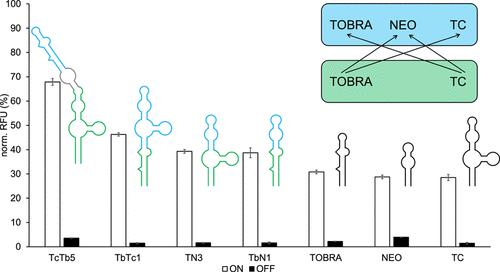合成双输入杂交核糖开关 - 酵母中优化的遗传调节因子
ACS Synthetic Biology ( IF 3.7 ) Pub Date : 2025-02-04 , DOI: 10.1021/acssynbio.4c00660
Daniel Kelvin 1 , Janette Arias Rodriguez 1 , Ann-Christin Groher 1 , Kiara Petras 1 , Beatrix Suess 1, 2
合成核糖开关是完全由 RNA 组成的遗传调控元件,已被设计为在生命的所有领域中控制转录和翻译水平的各种机制。通过将核糖开关中的两个紧密插入 mRNA 序列中,可以提高核糖开关调节的效率,从而产生串联核糖开关。串联状态允许两个结合口袋有助于更高的动态范围,从而改善了比单个核糖开关的调节。本研究的重点是通过将两个不同核糖开关的结合口袋集成到一个连续结构中来创建一种新颖的串联核糖开关设计,从而创建双输入混合核糖开关。与串联核糖开关相比,这些杂交体保持紧凑的尺寸,序列长度更短,同时利用了两种亲本核糖开关提供的结合口袋和支架序列。通过合理的设计,设计了源自四环素、妥布霉素、新霉素和巴龙霉素结合核糖开关组合的杂交构建体,其显著增加了动态范围(例如,妥布霉素的表达量从 14 倍增加到 36 倍),同时在不存在配体的情况下增加其表达水平(例如,四环素的表达量为 28% 至 68%)。本研究扩展了合成核糖开关的工具箱,并建立了适用于类似核糖开关的一般设计指南。此外,双输入状态使混合核糖开关成为遵循布尔逻辑设计遗传调节因子的有趣目标。
The Importin‐β Protein LbSAD2 Enhances Salt Gland Development and Salt Resistance in the Recretohalophyte Limonium bicolor
Limonium bicolor is a typical recretohalophyte with specialised salt glands that secrete excessive Na+ out of the plant. The detailed mechanisms of salt gland development and salt resistance are largely unclear. Here, we investigated the function of the importin‐β protein LbSAD2 from L. bicolor. Lines with silenced LbSAD2 expression showed significantly lower salt gland density, salt‐secretion ability and salt resistance, whereas LbSAD2 overexpression lines had a greater number of salt glands with an abnormal distribution in the abaxial and leaf adaxial surfaces. A previously uncharacterised hydrophobic protein, Lb2G12077, can bind to the LbSAD2 promoter to inhibit the transcription of LbSAD2 verified by a yeast one‐hybrid, electrophoretic mobility shift and dual‐luciferase reporter assay. Further functional validation revealed that Lb2G12077 demoted salt gland development and salt resistance of L. bicolor. Moreover, a yeast two‐hybrid, bimolecular fluorescence complementation and GST pull‐down assays indicated that the hypothetical protein Lb2G12567 interacts with LbSAD2, whose silenced lines also showed significantly reduced salt gland density, salt‐secretion ability and salt resistance, suggesting Lb2G12567 played a similar positive role in salt resistance. The current LbSAD2 pathway sheds light on salt gland development and salt resistance in L. bicolor, laying the foundation for increasing salt tolerance in crops.


